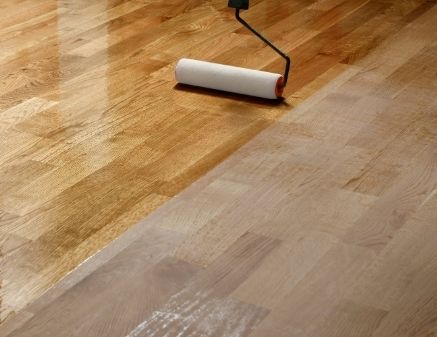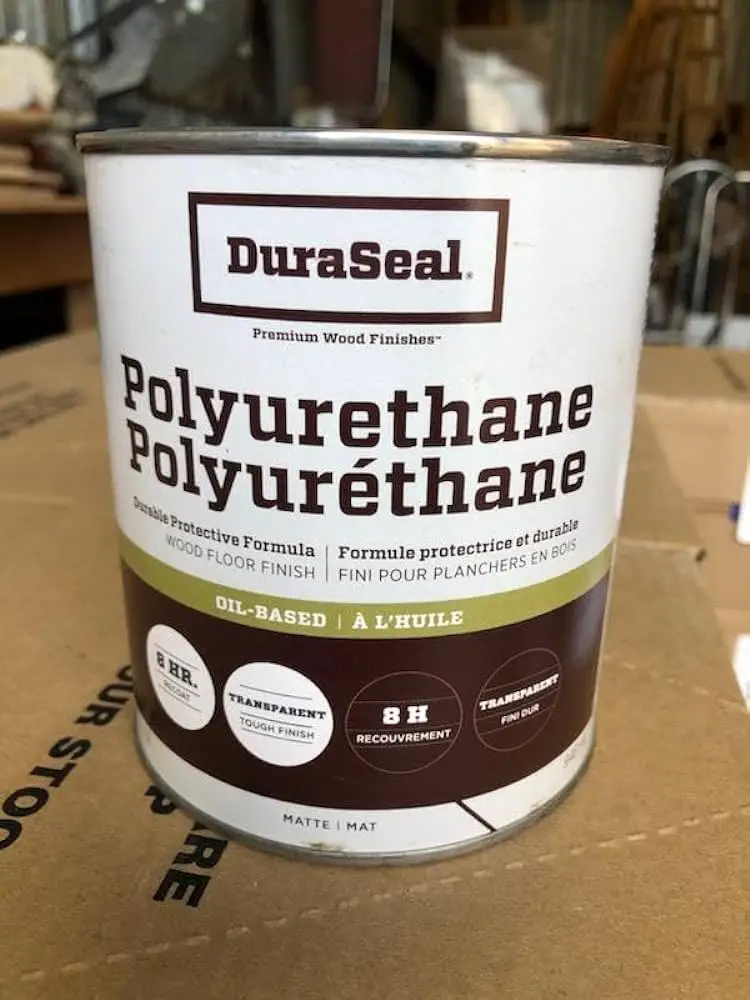Sealing wood floors helps protect them from moisture damage, stains, and wear. In addition to enhancing their natural beauty, it also adds longevity.
Today, there are several sealing options available, including oil-based polyurethane, water-based polyurethane, and penetrating sealers. Each type has its unique properties and durability levels, so it’s essential to choose the one that best suits your needs and preferences. Proper preparation and application techniques are crucial in ensuring a flawless and long-lasting seal.
This article will guide you through the process of wood floor sealing, providing expert tips and advice to help you achieve professional results. With the right approach, you can enjoy beautiful, durable, and well-protected wood floors for years to come.
Choosing The Right Sealant
When it comes to wood floor sealing, choosing the right sealant is crucial. Not only does it protect your wood floors from everyday wear and tear, but it also enhances their beauty and extends their lifespan. Understanding the different sealant options and considering the type of wood you have are key factors in making the right choice.
Consideration For Type Of Wood
The first step in choosing the right sealant for your wood floors is to consider the type of wood you have. Different types of wood have different characteristics and require different types of sealants. Some woods are naturally more porous, while others are denser and more resistant to moisture.
- Start by identifying the species of wood you have, such as oak, maple, or pine.
- Take note of its hardness, as this will impact how well it resists scratches and dents.
- Consider the natural color and grain pattern of the wood, as certain sealants can enhance or change the appearance.
By understanding the specific properties of your wood, you can narrow down the sealant options that are most suitable for your floors.
Understanding Different Sealant Options
Once you’ve considered the type of wood you have, it’s time to explore the different sealant options available. There are various types of sealants, each with its own distinct properties and benefits. Here are some commonly used sealants:
| Sealant Type | Properties |
|---|---|
| Polyurethane | Durable, water-resistant, and available in different finishes (e.g., glossy or matte). |
| Lacquer | Quick-drying, provides a hard and durable finish. |
| Shellac | Produces a warm and natural appearance, easy to apply and repair. |
| Oil-based | Enhances natural wood color, penetrates deeply, and offers good protection. |
| Water-based | Quick-drying, low odor, and environmentally friendly. |
Each sealant type has its own application process and maintenance requirements. It’s important to read the manufacturer’s instructions and consult with a flooring professional if needed.
Choosing the right sealant for your wood floors involves considering the type of wood you have and understanding the different sealant options available. By taking these factors into account, you can ensure that your wood floors are properly protected and beautifully sealed.
Preparing The Surface
To properly seal a wood floor, start by thoroughly preparing the surface. Sand the floor to create a smooth and clean base for sealing. Ensure all dust and debris are removed before applying the sealant for a lasting finish.
Sanding And Cleaning The Floor
Once you have decided to seal your wood floor, the first step in preparing the surface is sanding and cleaning. Sanding the floor ensures all imperfections and unevenness are smoothed out, providing a suitable base for the sealant. This process involves using a floor sander to remove the top layer of the wood, revealing a fresh surface ready for sealing. Additionally, cleaning the floor is essential to remove any dust, dirt, or debris that can hinder the sealing process. Sweeping the floor and using a vacuum cleaner are effective methods to achieve a clean surface.
Filling In Gaps And Cracks
After sanding and cleaning the floor, the next step is to fill in any gaps and cracks. Wood floors are prone to developing gaps and cracks due to various factors such as humidity and temperature changes. These gaps not only affect the appearance of the floor but can also impact the effectiveness of the sealant. To address this issue, you can use wood putty or filler specifically designed for wood floors. Apply the filler into the gaps and cracks, ensuring it is level with the floor surface. Once the filler is dry, sand the area lightly to achieve a smooth finish.
By diligently following the steps of sanding and cleaning the floor, as well as filling in gaps and cracks, you are on your way to effectively preparing the surface for wood floor sealing. These crucial steps ensure that the sealant adheres properly to the wood, resulting in a durable and long-lasting finish. Remember, a well-prepared surface is the key to a successful wood floor sealing project!
Applying The Sealant
Using The Right Tools
When sealing a wood floor, ensure you have the necessary tools.
Ensuring Even Application
To achieve a smooth finish, apply the sealant evenly in thin, consistent layers.

Credit: www.fromtheforest.com
Drying And Curing Process
When it comes to wood floor sealing, the drying and curing process is a crucial stage that directly impacts the final outcome of the sealing job. Understanding the drying time and ensuring proper ventilation are essential aspects of this process.
Understanding Drying Time
The drying time for wood floor sealing can vary depending on factors such as the type of sealant used and environmental conditions. Different sealants may have different drying times, so it’s essential to refer to the manufacturer’s instructions for specific guidance.
Importance Of Proper Ventilation
Proper ventilation during the drying and curing process is critical to ensure effective evaporation of solvents from the sealant. This helps in reducing drying time and achieving a more durable and even finish. Adequate airflow also minimizes the risk of uneven drying and potential issues like bubbling or streaking.
Maintaining Sealed Wood Floors
Maintaining sealed wood floors is crucial for preserving their beauty and ensuring their longevity. To ensure your wood floors retain their luster and durability, it’s essential to establish a regular maintenance routine and periodically reapply the sealant.
Regular Cleaning Routine
A regular cleaning routine is essential for keeping sealed wood floors in top condition. Sweep or vacuum the floors regularly to remove dirt and debris that can scratch the surface. Use a lightly dampened mop with a gentle wood floor cleaner to maintain cleanliness without causing damage. Avoid using excessive water, as it can seep into the wood and cause warping or discoloration.
Periodic Reapplication Of Sealant
Ensuring the sealant on your wood floors is in good condition is vital for preserving their beauty and protecting them from wear and tear. Periodically inspect the floors for signs of wear on the sealant, such as dulling or spotting. When the sealant shows signs of wear, it’s time to reapply. Properly preparing the floor, ensuring it’s clean and dry, and applying a fresh coat of sealant will help safeguard your wood floors for years to come.

Credit: www.amazon.com

Credit: www.walmart.com
Frequently Asked Questions For Wood Floor Sealing
Do Wood Floors Need To Be Sealed?
Yes, wood floors need to be sealed. Sealing helps protect the wood from moisture, stains, and daily wear and tear. It also enhances the floor’s longevity and beauty. Regular sealing is recommended to maintain the quality and ensure the durability of wood floors.
What Is Best To Seal A Wooden Floor?
The best sealant for a wooden floor is polyurethane. It provides durable protection against moisture and wear.
Can You Seal A Wood Floor Without Sanding?
Yes, you can seal a wood floor without sanding by using a liquid deglosser or a chemical etcher.
What Is Used To Seal Wood Floors?
You can seal wood floors using varnish, polyurethane, or penetrating sealers. These products protect the wood from moisture and wear.
Conclusion
Make your wood floors shine with proper sealing techniques. Protect against wear and tear. Enhance the beauty of your space for years to come. Consider professional help for best results, or DIY with caution. Seal your wood floors and enjoy lasting beauty and durability.


